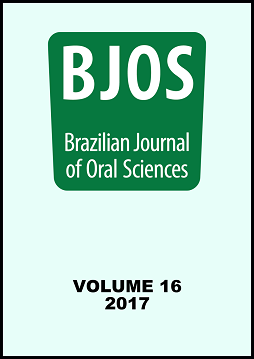Abstract
Objective: This study determined the relationship between masseter muscle thickness and overbite values among Nigerians. Methods: The subjects included 66 consecutive patients (21 males and 45 females) who presented for fixed orthodontic appliance treatment. Overbite values were measured from standard lateral cephalometric radiographs taken for all patients,who were thereafter divided into three groups of reduced overbite (n=22, mean -1.11+ 2.18mm), normal overbite (n=22, mean 2.59+0.50mm) and increased overbite (n=22, mean 5.21+1.39mm). The masseter muscle thickness of each patient was measured bilaterally using ultrasonography. Associations between masseter muscle thickness and different overbite values were analyzed using unpaired t-test, ANOVA and Tukey's multiple comparison analysis. Results: Mean masseter muscle thickness was 11.23 ± 2.40 mm during relaxation and 12.81 ± 2.64 mm during contraction for study participants. The masseter muscle on the habitual side of mastication of participants was generally thicker but the difference was not statistically significant (P>0.05). There was a progressive increase in masseter muscle thickness from reduced overbite through normal overbite to increased overbite groups and the differences were statistically significant (P<0.01). Tukey's multiple comparisons showed significant differences between all the three overbite groups (P<0.05). Conclusion: There was a direct relationship between the muscle thickness and overbite variations.The Brazilian Journal of Oral Sciences uses the Creative Commons license (CC), thus preserving the integrity of the articles in an open access environment.
Downloads
Download data is not yet available.

